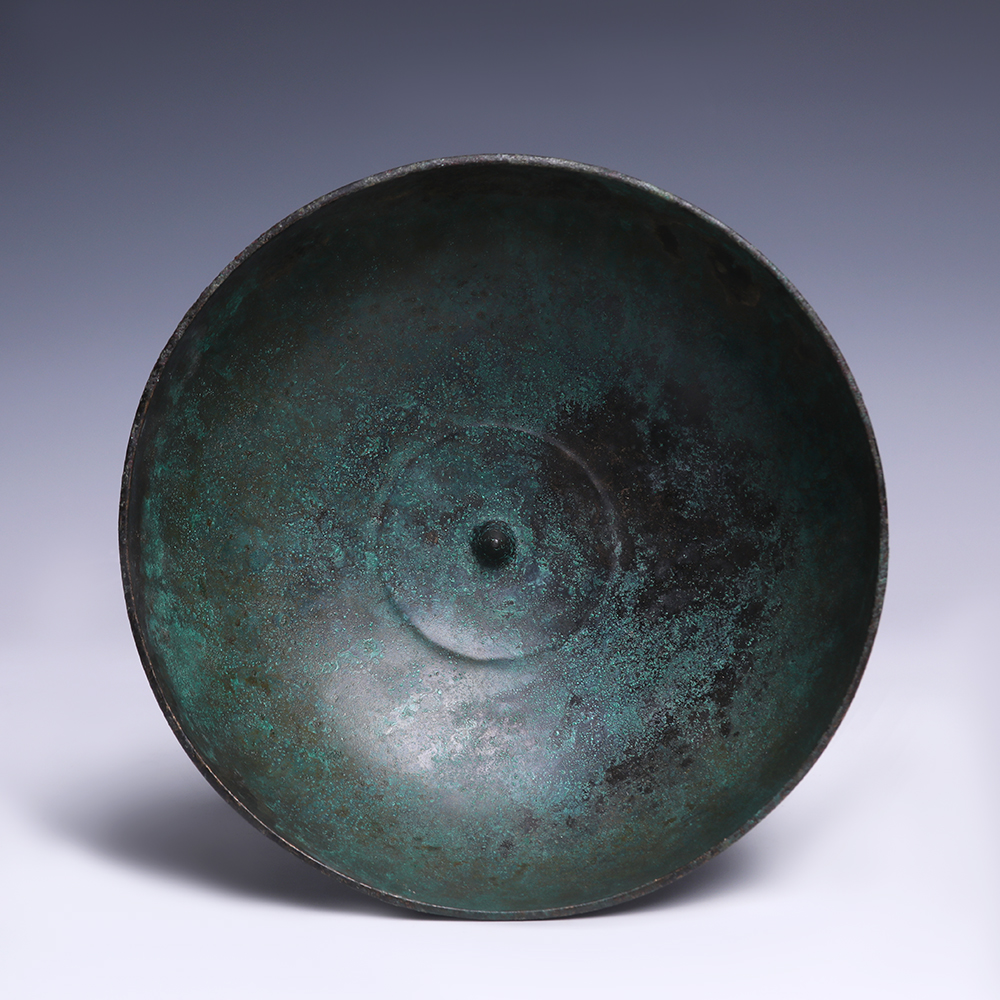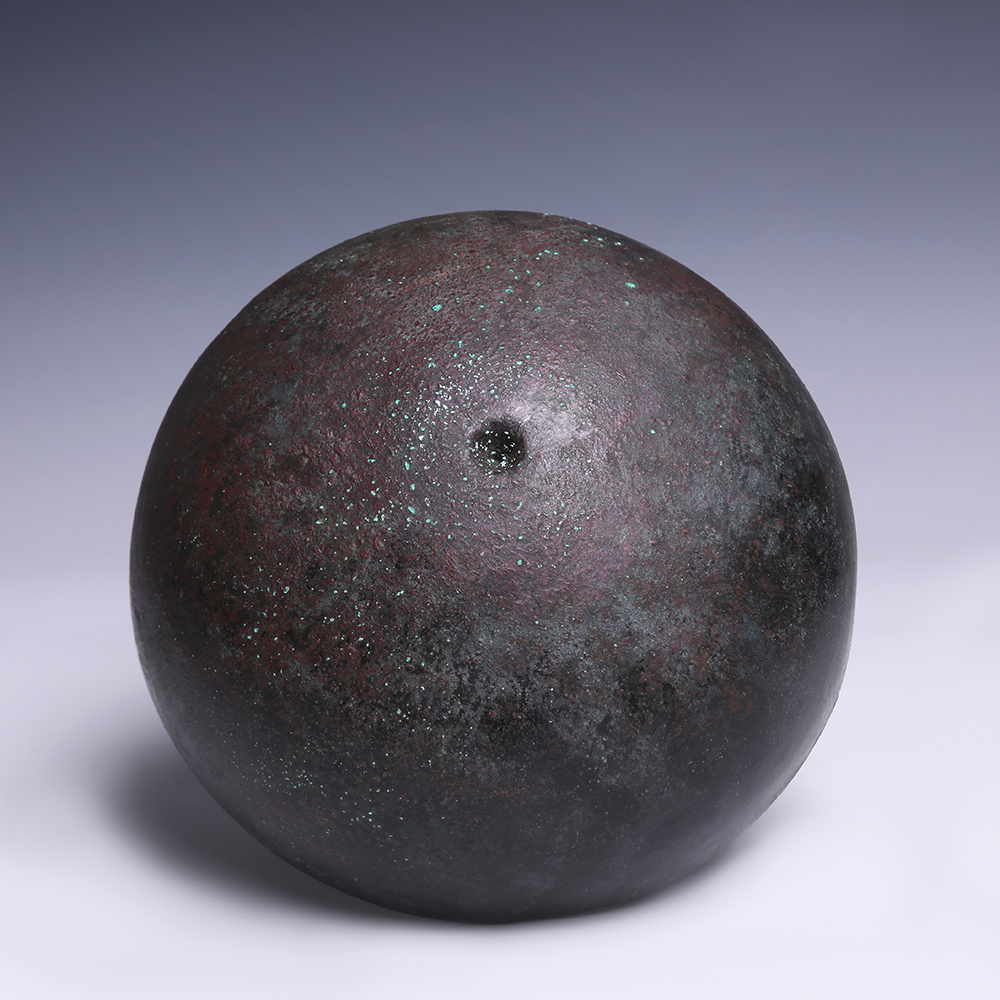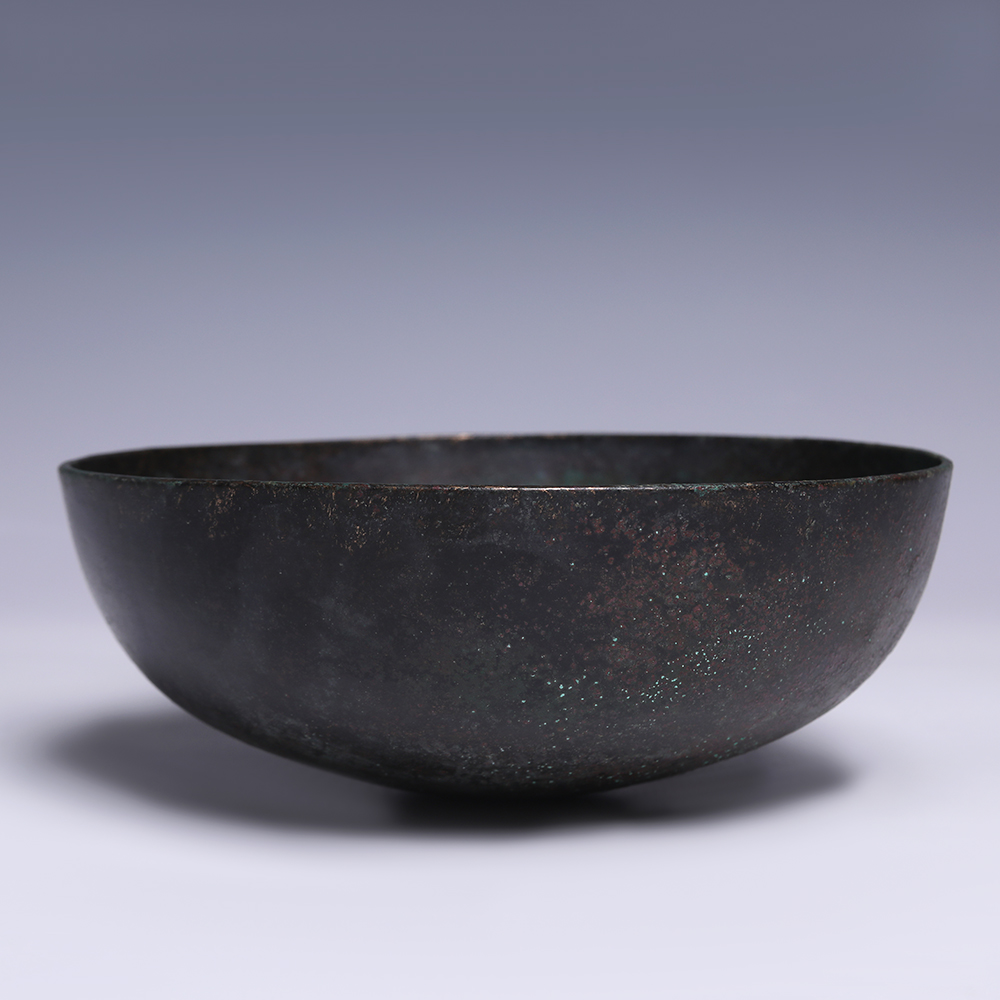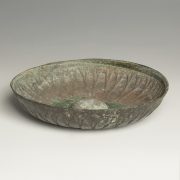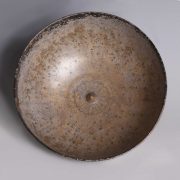From the Iron Age, handless and footless bronze bowls, with a small omphalos (ὀμφᾰλός), the raised central point, have been widely discovered in Assyria, Iran, Cyprus, Mainland Greece and Etruria. In Greek times, such bronze bowls, sometimes with elaborately decorated figural and zoomorphic ornaments, were known as ‘phiale mesomphalos’. They are believed to have been used as a cremation container or a dedicatory offering, in accordance with Homer’s literature. However, bronze bowls with a central omphalos had a very clear Near Eastern origin.
The Achaemenid Empire rose from a strong military and political background which differed to the traditional Mesopotamian kingdoms. At its peak, it had the most expansive territory in history, on account of which it embraced a fusion of various languages, religions, and cultures. Instead of destroying all the astonishing achievements in art created by Mesopotamian ancestors, the Achaemenid Empire preserved and inherited the traditional practices of Mesopotamian art, adapting them to their own aesthetic taste. The bronze phiale was one of the items to be found on the dining table of the Persian court. It was specifically a wine bowl, integral to the pouring of libations at mealtimes and other ritual occasions.
